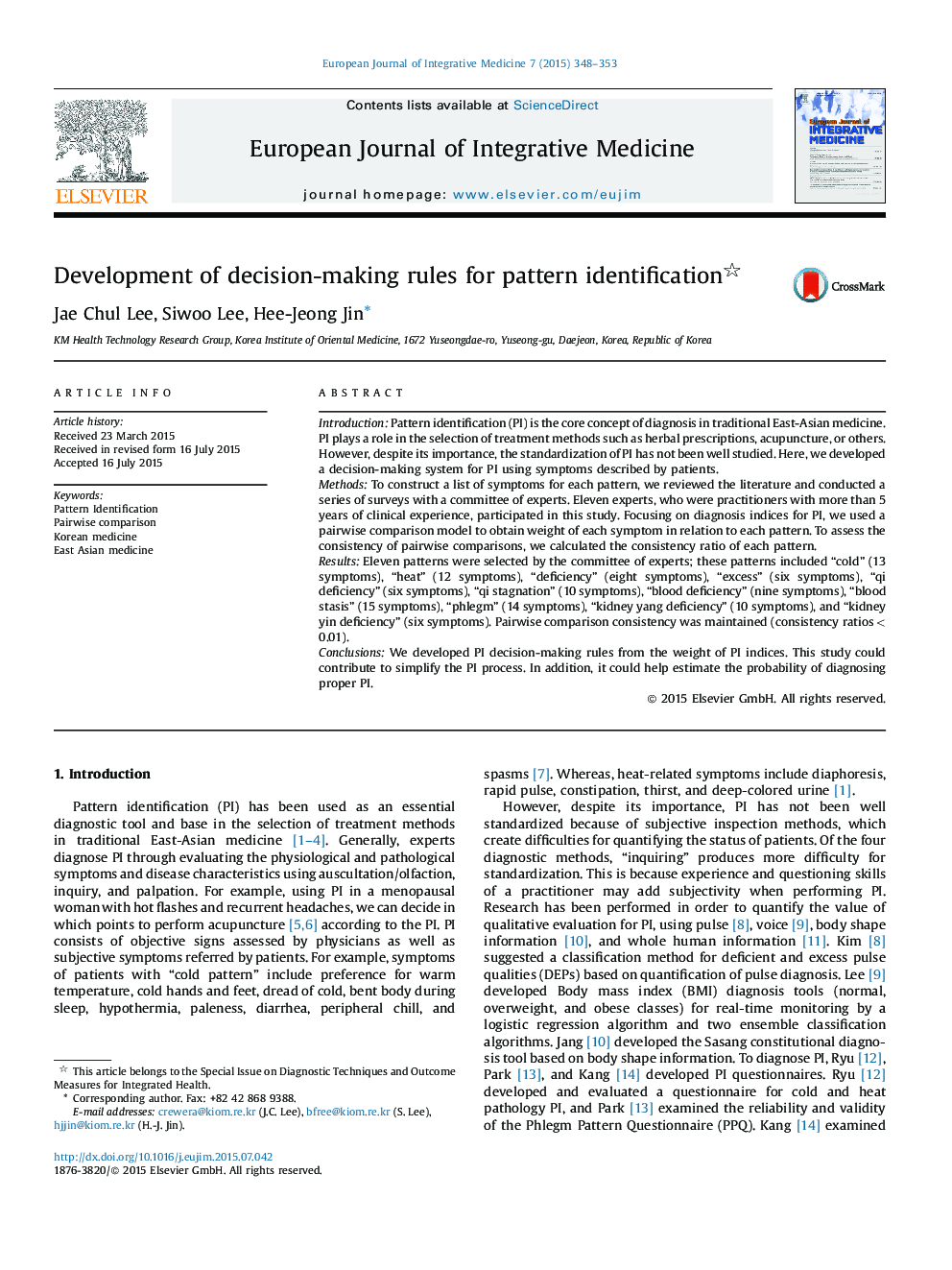| Article ID | Journal | Published Year | Pages | File Type |
|---|---|---|---|---|
| 2479676 | European Journal of Integrative Medicine | 2015 | 6 Pages |
IntroductionPattern identification (PI) is the core concept of diagnosis in traditional East-Asian medicine. PI plays a role in the selection of treatment methods such as herbal prescriptions, acupuncture, or others. However, despite its importance, the standardization of PI has not been well studied. Here, we developed a decision-making system for PI using symptoms described by patients.MethodsTo construct a list of symptoms for each pattern, we reviewed the literature and conducted a series of surveys with a committee of experts. Eleven experts, who were practitioners with more than 5 years of clinical experience, participated in this study. Focusing on diagnosis indices for PI, we used a pairwise comparison model to obtain weight of each symptom in relation to each pattern. To assess the consistency of pairwise comparisons, we calculated the consistency ratio of each pattern.ResultsEleven patterns were selected by the committee of experts; these patterns included “cold” (13 symptoms), “heat” (12 symptoms), “deficiency” (eight symptoms), “excess” (six symptoms), “qi deficiency” (six symptoms), “qi stagnation” (10 symptoms), “blood deficiency” (nine symptoms), “blood stasis” (15 symptoms), “phlegm” (14 symptoms), “kidney yang deficiency” (10 symptoms), and “kidney yin deficiency” (six symptoms). Pairwise comparison consistency was maintained (consistency ratios < 0.01).ConclusionsWe developed PI decision-making rules from the weight of PI indices. This study could contribute to simplify the PI process. In addition, it could help estimate the probability of diagnosing proper PI.
